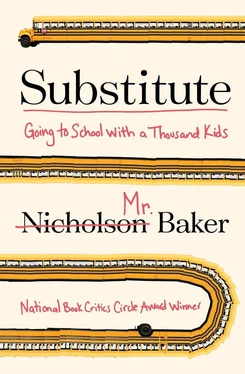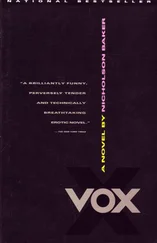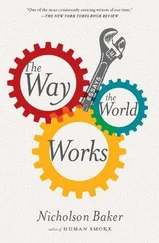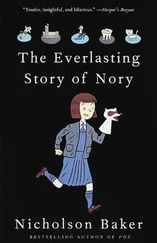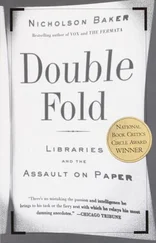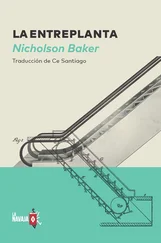“Well, thanks.”
The buses were announced, and then the class was gone.
While I was writing a note to the teacher, on yellow lined paper, the night custodian came in to empty the trash. “How are you?” she asked. “You survived the day?”
I said I had. “They got a little wild.”
“Oh, big-time,” she said. Her husband was the day custodian, she explained, and he’d told her all about how wild the kids were. She had to do all the bathrooms by nine o’clock, she said. She used to have an assistant, but then the district had cuts and she lost her assistant. “But you know what? You do the best you can.”
That’s true. You do the best you can. End of Day Three.
DAY FOUR. Wednesday, March 19, 2014
LASSWELL MIDDLE SCHOOL, SEVENTH GRADE
YOUR BRAIN LOOKS INFECTED
I STARED AT THE RINGING PHONE uncomprehendingly, and then I remembered: I’m on call. Beth asked if I was interested in filling in for a seventh-grade math teacher, Ms. Nolton, at Lasswell Middle School. I was.
The middle school, hidden behind several fifteen-foot-high snowpiles in the parking lot, seemed new, with higher ceilings and a fancier entranceway than the high school — one of many schools built during Maine’s era of relative prosperity, when Angus King was governor. My classroom, part of Team Orinoco, had cinderblock walls painted a gentle yellow, with a long row of Venetian-blinded windows down one wall. The chairs rested on the desks, which were arranged as a square within a larger square. There were two identical taxonomy-of-learning posters hanging in the room. One was in the back by a wall telephone, and another was affixed to a corkboard, just above an impressive chart of mathematical “benchmarks” for seventh- and eighth-graders, produced by the Northwest Evaluation Association. One benchmark read: “MA.03.AEE.03.02. Understands the solution to an inequality results in an infinite set of answers as plotted on a number line.”
Inequalities, it turned out, was one of the topics Ms. Nolton wanted us to be thinking about on that day. But first there was homeroom. “Students are expected to be working, reading, or socializing quietly,” said Ms. Nolton’s sub plans. The students, who were giddy from reciprocal teasing, yanked the chairs off the desks and talked about music. The boys had faint mustaches, and their voices had just changed, or hadn’t yet changed; some of the girls looked like they were about twenty-two.
“I’m allergic to Justin Bieber,” said a flirty, sporty boy, Jason.
“Justin Bieber’s amazing — no hate,” said Sydney, a flirty, sporty girl with a wrist brace. “He makes elephants take dirt roads.”
“Elephants love him,” said Sunrise, who was thin and wispy-haired and secretive.
“My mom thinks he’s weird,” said Jason.
“I think he’s a freak,” said a loud boy, Evan.
“He’s a weirdo with legs,” said a super-confident girl, Cayden.
Georgia, broad-shouldered and theatrical, slammed her iPad pouch down on her backpack. “I don’t like anything,” she said. “Everything makes me mad. Even colors make me mad.”
After the beep on the PA system we all stood and said the pledge, followed by a moment of silence. “Thank you, you may be seated,” said the secretary on the PA system. “On the lunch menu today we have grilled chicken and broccoli on garlic butter noodles, with a garden strawberry and spinach salad, crisp celery sticks, and chilled grape juice, and milk choices.” The students talked through the rest of the announcements, which were about intramural basketball, drama rehearsal, and a meeting of the yearbook committee. “Here’s my pencil, I found it, yay!” said Sydney.
Next period was a STAR block. “What is STAR?” I asked William, who was staring at the floor. “Um, STAR is STAR,” he said. A technology enrichment specialist named Mrs. Elton — an ample woman in a gray pantsuit with the voice of a caregiver in a nursing home for people with dementia — introduced herself. She taught STAR class on Wednesdays, she said, which was fine with me: these middle schoolers made me nervous. “Everyone should be reading for the first few minutes,” she announced. The class went quiet; the boys sat on one side of the room and the girls sat on the other. Using purple marker, she wrote a list of science-related apps on the whiteboard: Little Alchemy, goREACT, Germ Blaster, NASA Viz, GeoMaster Plus, EarthViewer, Phases of the Moon, Black Hole, Powder Game Viewer. When she was done she explained that the students could download these on their iPads — except not right now. “We seem to be having Internet issues this morning,” she said. “Has anyone had a chance to try Little Alchemy?” Nobody had. She went down the list, describing “fun apps” while the class stared at their hands or down at the blue-green industrial carpeting. When the Internet came back up, some kids downloaded Germ Blaster and GeoMaster Plus and Black Hole, and soon half the class was laughing and poking at their iPads. “Guys, little noisy,” Ms. Elton warned. She looked at the clock. “Okay, guys, you can start packing up,” she said, and the STAR block was over.
Next period I was on break, making some superstrong instant coffee for myself in the teachers’ break room, and after that was an “advisory block”—a study hall. The students were supposed to take an online survey about technology, which they did, in extreme silence. Some of them listened to music on earbuds; two girls shared one set of earbuds. These advisory kids were easy — too easy, I thought. I missed the jokes, the bavardage. I got my computer out and read an article in The Huffington Post : “‘Giraffe Woman’ Has 11-Inch-Long Neck.” The giraffe woman had begun her body modification program in middle school, by wrapping bent coat-hangers around her neck. Good lord. I could hear a science teacher next door explaining systems of classification — a restaurant menu, she said, was actually a way of classifying the food in a restaurant: appetizers, entrees, meat, fish, dessert. “I can’t believe you’re so focused,” I said to the students. “Is this always the way it is?”
“No,” said a boy.
At 9:55, the bell rang, and it was the beginning of my first actual math class. It was a high-level group, apparently, and they had lots to do: a half-page worksheet on number lines and coordinate planes, a “Scoot Sheet” of one-variable algebra questions, and several sets of problems on a website called IXL. They handled these fairly well. What broke the class’s will, though, was a page downloaded from MathWorksheetsLand.com. At the top of the page was a cartoon of a hard-hatted man bearing down on a jackhammer. Below him were ten gnarly, closely spaced strings of variables that the students were supposed to “evaluate”:
Evaluate y2+3/4x3−3z3 when x=4, y=2 and z=3
Evaluate (x + xy)−(−4y−3)x+6 for x=3 and y=2
Several kids passed out small personal whiteboards, shaped like slates from one-room schoolhouses of yore, and everyone dutifully began crowding arithmetical calculations on them with dry-erase markers. They erased with their fingertips, or with neatly balled-up athletic socks, a bin of which were set aside for the purpose. The problem was that most of the students were shaky on the order of operations, and many had forgotten how to handle exponents. A few couldn’t recall what seven times six was. They ended up with all kinds of strange answers on their whiteboards. Sage’s fingers were blue from dry-erase ink. A plaid-shirted blond boy named Isaac called me over. “I’m having trouble with number four,” he said:
Evaluate 6d+3d2+3e−e/6d+d−e for d=5 and e=2
Читать дальше
